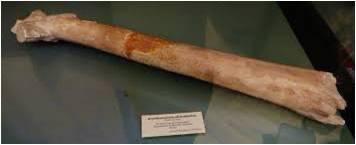You are here
Book sheds light on excavations of Prophet Lut’s supposed home
By Maria Weldali - Sep 11,2021 - Last updated at Sep 11,2021
AMMAN — A recently published book details the efforts of Jordanian scholars and archaeologists that resulted in the discovery of Prophet Lut’s supposed home in the Dead Sea area.
The Jordan Tour Guides Association and the Hashemite University launched Jordanian historian Mohammad Waheeb’s book, “The Homeland of Prophet Lut”, in partnership with other public universities in August.
Waheeb, an archaeology professor at the Hashemite University, said that local universities, national research centres and previous efforts of foreign archaeologists all contributed to locating Prophet Lut’s supposed home.
Experts from local communities in the southern Aghwar district contributed to the efforts, which date back to 1965, according to Waheeb.
He said that the Jordanian team’s focus has mainly sought to determine whether or not Prophet Lut’s city had been fully submerged or could be recovered.
“The research team consisted of archaeologists, geologists, anthropologists, plant, climate, water and religious experts,” according to Waheeb.
The national team started its mapping work 30 years ago, according to the book. Waheeb said excavations are still ongoing.
The scientific method that was followed included documentation, report preparations, laboratory analyses, archaeological excavations and field surveys, according to the book.
Archaeological evidence, scientific reports and religious scripture all indicate that the city is located in the southern Aghwar district, particularly starting from Ghor Al Haditha reaching Ghor Al Mazraah, in addition to Ghor Al Safi, Ghor Feifa and Al Namira site, he said.
Wadi Shuaib project in 1998, Wadi Husban project in 2000, Wadi Araba project in 1990, are among the team’s 20 projects done over the years.
The supposed homeland of prophet Lut has grabbed the attention of and was visited by ancient Greek historiographer Strabo, archaeologist Edward Palmer, Jewish historian Josephus, in addition to other travellers and scholars.
In 1963, Paul Lapp, who was an American archaeologist, started with his exploration work at Bab Al Thiraa which is a monumental cemetery, located south to Ghor Al Haditha, then he continued executing surveys in other archaeological sites located within southern Aghwar district until 1967.
All evidence shows that the area (southern Aghwar) was settled by the people of Lut in the early Bronze Age, according to Waheeb’s book.
“The discovery consists of villages, towns, fences and graves which date back to the Early Bronze Age, equivalent to 3,200 BC,” Waheeb said.
“The new discovery is of universal relevance,” he concluded.
Related Articles
AMMAN — Surrounded by fertile valleys and highlands, the archaeological structures of Iraq Al Amir are rich in historical narratives of the
AMMAN — Known locally as Khatt Shebib, Jordan’s own “great wall” is the second-longest structure built by humans next to the Great Wall of C
AMMAN — Ancient fossil remains have revealed that Jordan once hosted one of the largest flying reptiles in the world, known as Arambourgiani














